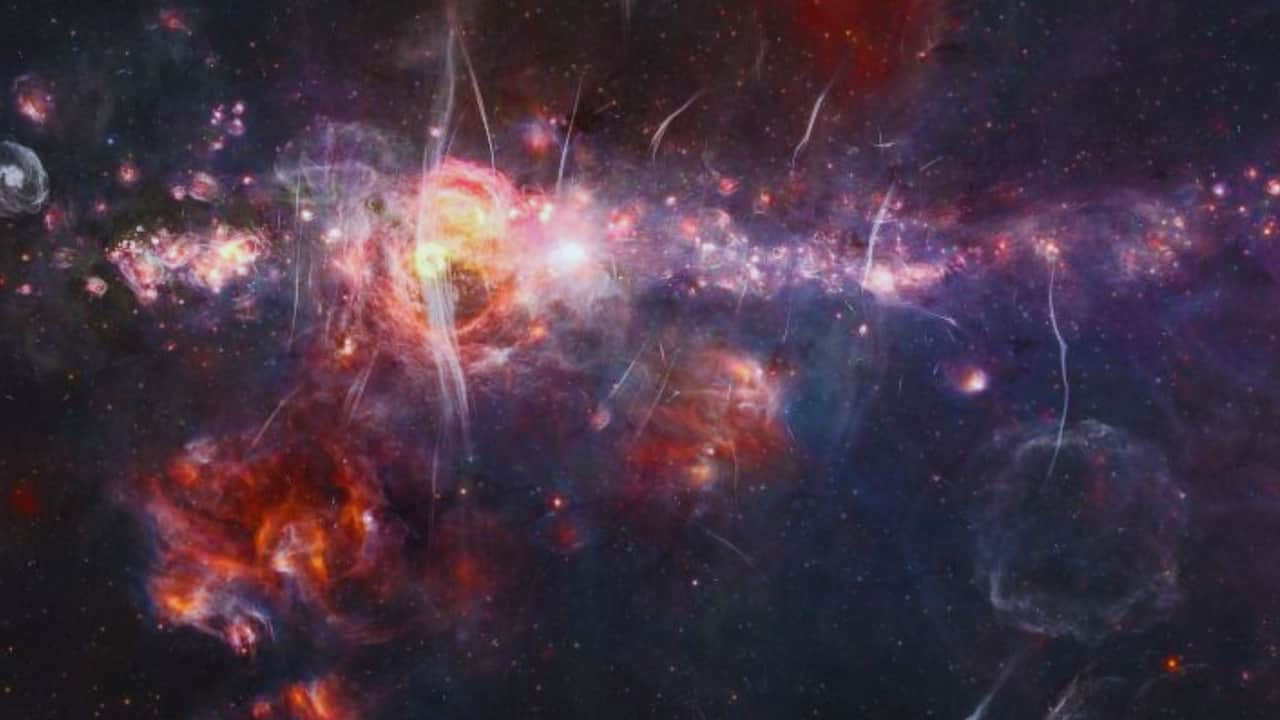Record-Breaking Gamma Rays Illuminate a Mysterious Power Source at the Galaxy’s Core
Scientists at the High-Altitude Water Cherenkov (HAWC) observatory have made a groundbreaking discovery that’s lighting up our understanding of the Milky Way’s center. Over seven years of careful observation, they’ve detected the most powerful gamma rays ever recorded from our galaxy’s heart, revealing a cosmic particle accelerator of unprecedented strength.
The Discovery That’s Shaking Up Space Science.
In the mountains of Mexico, 13,000 feet above sea level, HAWC’s team recorded 98 extraordinary gamma-ray events with energy levels topping 100 teraelectronvolts—a mind-boggling amount of power that’s left scientists both excited and puzzled. This mysterious power source, dubbed HAWC J1746-2856, is showing us a side of our galaxy we’ve never seen before.
“These results give us a peek at the center of the Milky Way at energies far beyond anything we’ve seen before,” explains Dr. Pat Harding from Los Alamos National Laboratory. “We’re witnessing some of the most extreme processes in the universe right in our cosmic backyard.”
What’s Behind This Cosmic Light Show?
The source of these powerful rays appears to be what scientists call a PeVatron—think of it as nature’s own particle accelerator, but on a massive scale. These cosmic accelerators can be created:
- Dying stars explode as supernovas.
- New stars are being born.
- There are strong magnetic fields around supermassive black holes.
The team has identified two potential culprits for these emissions.
- Sagittarius A*—our galaxy’s central supermassive black hole
- HESS J1746-285 is a known but mysterious gamma-ray source near the Radio Arc.
How They Made The Discovery
The HAWC observatory employs a sophisticated detection system.
- Gamma rays hit Earth’s atmosphere.
- They break into showers of lower-energy particles.
- Underground detectors catch these particles.
- Scientists trace them back to their source.
This discovery is particularly special because these ultra-high-energy gamma rays are incredibly rare. “Most of these processes are so unusual you wouldn’t expect to find them in our galaxy,” Harding notes. “Finding something this powerful right at our galaxy’s center is extraordinary.”
What this means for our understanding of space
This finding does more than just break records; it’s giving us new insights into our galaxy’s heart.
- It validates the presence of a potent PeVatron at the galactic center.
- The findings reveal a higher cosmic ray density than previously known.
- It suggests there’s a source of freshly accelerated protons in the region.
The discovery tells us the center of our galaxy is even more active and energetic than we thought. While black holes and dying stars are common suspects for such phenomena, the exact nature of this powerful source remains a mystery that scientists are eager to solve.
What’s Next?
The scientific community isn’t stopping here. Plans for more advanced observations are already in motion.
- In Chile’s Atacama Desert, a new detector is under construction.
- We need more sensitive equipment to pinpoint the exact source.
- We extended the observation periods to gather more data.
As Dr. Sohyoun Yu Cárcaron from the University of Maryland and the research team continue their work, each new observation brings us closer to understanding the powerful forces at work in our galaxy’s mysterious center.
This discovery ushers in a new era in our comprehension of cosmic physics, underscoring the numerous secrets our galaxy continues to conceal. As technology advances and observations continue, we may soon unlock more mysteries from this powerful cosmic accelerator at the heart of our Milky Way.
Table of Contents
